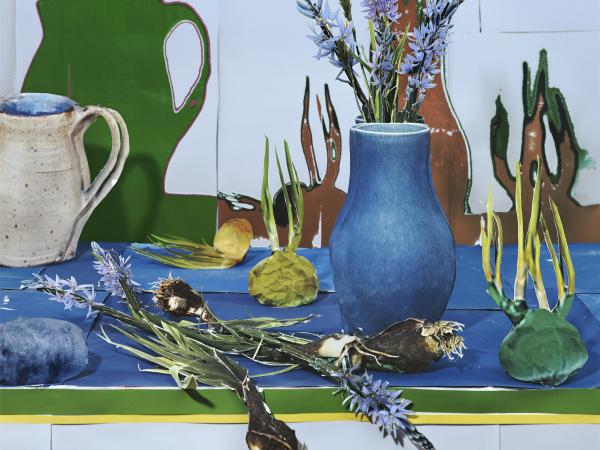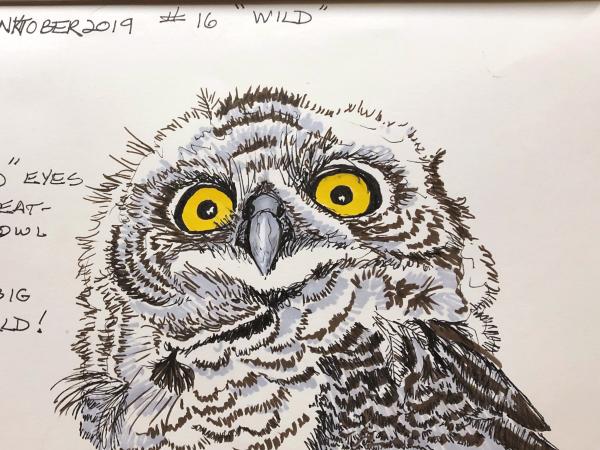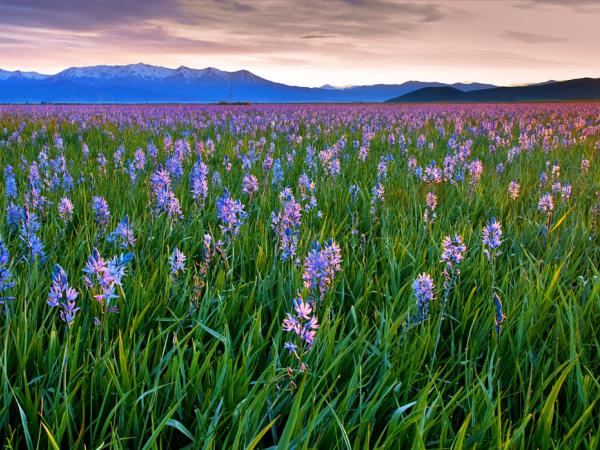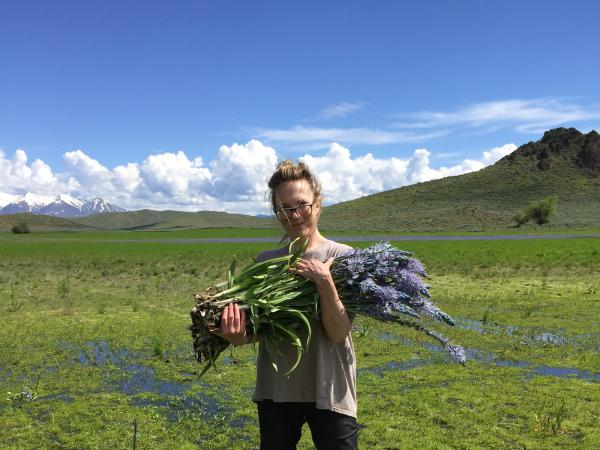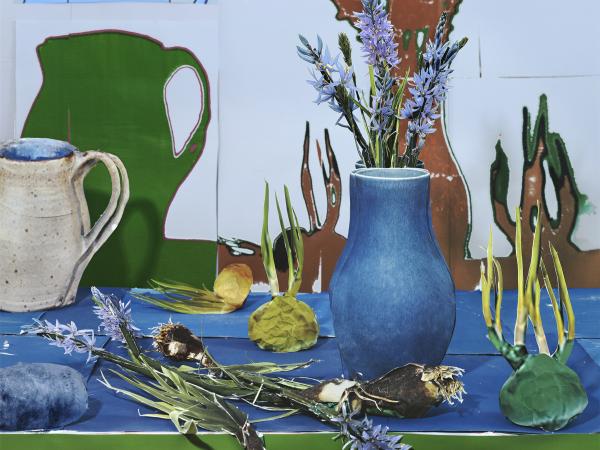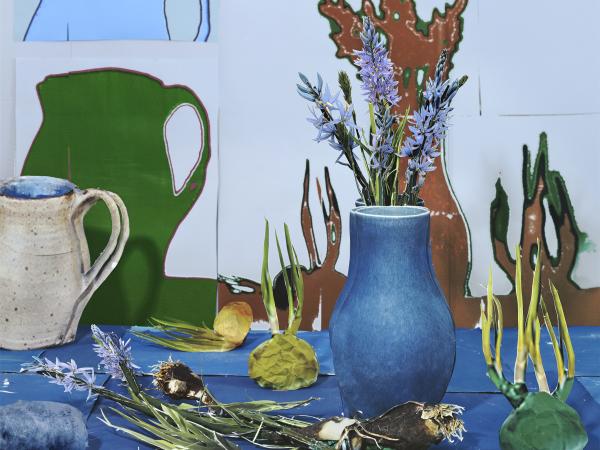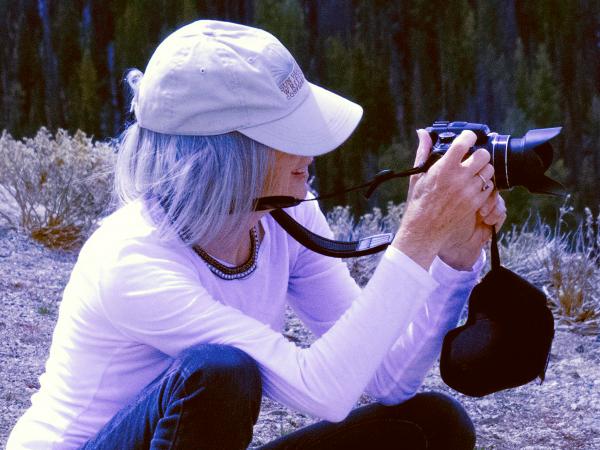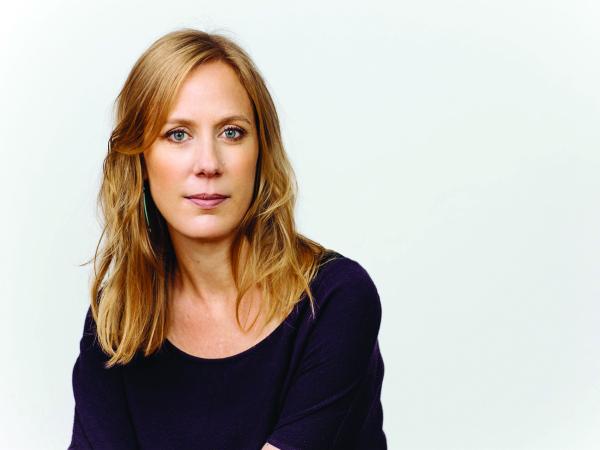Museum Exhibition
Derek No-Sun Brown (Shoshone-Bannock, Klamath and Ojibwe) grew up on the Fort Hall Reservation in eastern Idaho and the Boise Forte Reservation in northern Minnesota. The exhibition includes Brown's painting of camas harvesting, made as part of a collaborative project between SVMoA and the Shoshone-Bannock Tribes to create new signage for Centennial Marsh. Designed by Brown, the new signage addresses the Shoshone and Bannock peoples' continuing relationship to the Camas Prairie. Visitors to the exhibition are invited to take a poster of the new signage with them when they leave
A fifth-generation Westerner and the author of two nonfiction books and five novels, Judith Freeman has been commissioned by SVMoA to write an essay that responds to the social history of the prairie, a place she knows deeply, spending part of each year in Los Angeles and part outside Fairfield, Idaho.
With a background working in digital photography, sculpture, paint and vinyl, Daniel Gordon combines his interest in the history of landscape and still-life painting with his desire to explore organic forms using layers of collaged imagery. SVMoA has commissioned Gordon to create a room-sized installation in response to the palette and ecosystem of the prairie.
MK Guth engages rituals of social interaction, using her art to bring people together in cultural conversation. Her sculptures combine books, objects and written instructions for different kinds of events that involve the preparation and sharing of food and drink. SVMoA commissioned Guth to create a new artwork and an interactive public art project that responds to the camas lily and its history.
Dividing his time between Los Angeles and the Camas Prairie for nearly 20 years, Anthony Hernandez expands on a series of photographs he made through the screened walls of Los Angeles bus shelters, Hernandez has created new photographs of prairie landscapes and structures shot through mesh screens. The screens partially obscure our view of the prairie, adding a layer of abstraction to images that invite viewers to consider our visual experience of a place.
Sopheap Pich has created several bodies of work in response to the social and political history of flowers, including the morning glory, which his family used as a source of nutrition during the Khmer Rouge period in Cambodia. Working with natural materials such as bamboo, rattan, metal and stone, Pich creates sculptural works on a variety of scales. SVMoA commissioned Pich to create a large outdoor sculpture inspired by the camas lily, which he designed for a site in central Ketchum. Pich visited the prairie several times in preparation for the exhibition and has responded to the camas lily in a larger body of work that includes a second sculpture, woodblock prints and drawings. Pich's outdoor sculpture will be located at 551 N. 1st Avenue in Ketchum, just down the street from The Museum.
